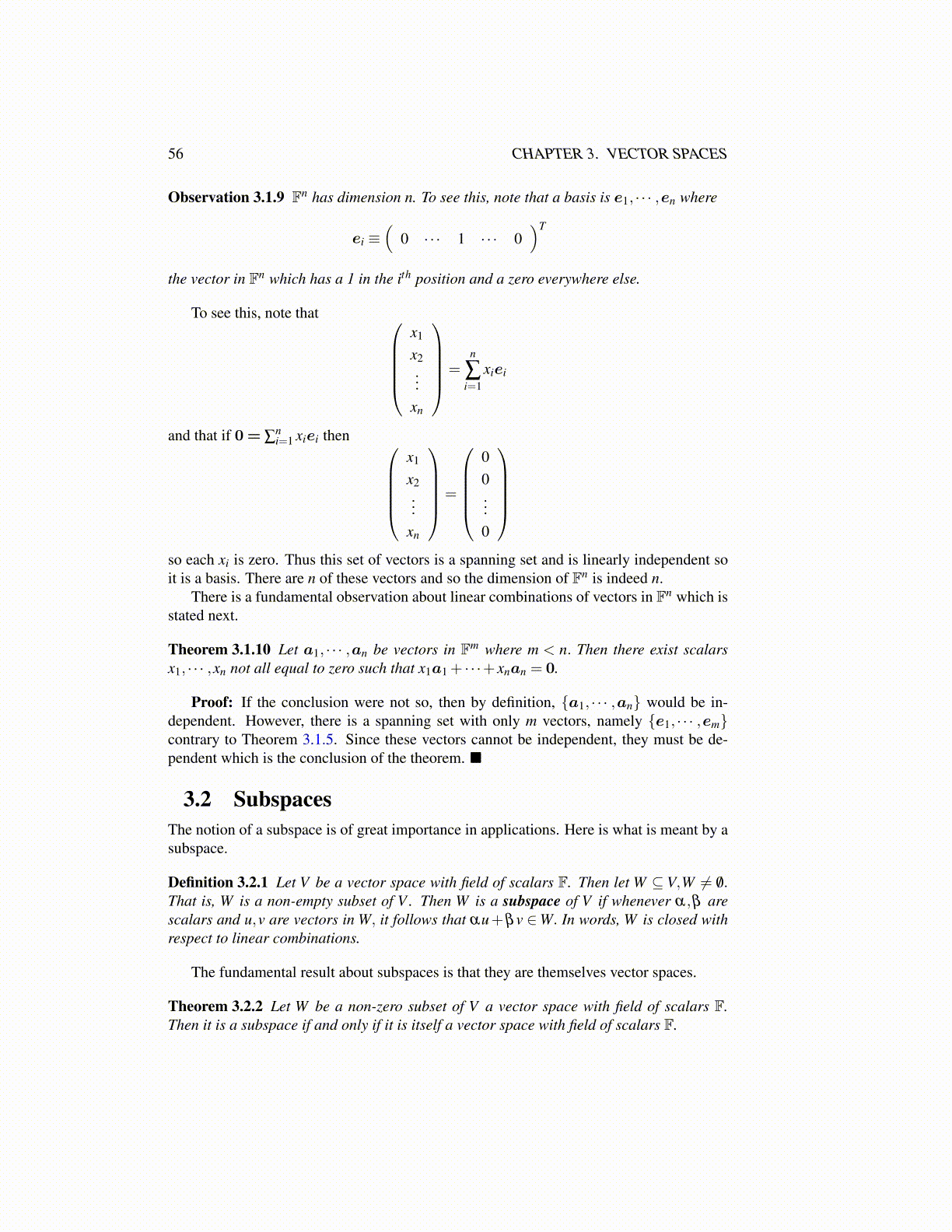
56 CHAPTER 3. VECTOR SPACES
Observation 3.1.9 Fn has dimension n. To see this, note that a basis is e1, · · · ,en where
ei ≡(
0 · · · 1 · · · 0)T
the vector in Fn which has a 1 in the ith position and a zero everywhere else.
To see this, note that x1
x2...
xn
=n
∑i=1
xiei
and that if 0 = ∑ni=1 xiei then
x1
x2...
xn
=
00...0
so each xi is zero. Thus this set of vectors is a spanning set and is linearly independent soit is a basis. There are n of these vectors and so the dimension of Fn is indeed n.
There is a fundamental observation about linear combinations of vectors in Fn which isstated next.
Theorem 3.1.10 Let a1, · · · ,an be vectors in Fm where m < n. Then there exist scalarsx1, · · · ,xn not all equal to zero such that x1a1 + · · ·+ xnan = 0.
Proof: If the conclusion were not so, then by definition, {a1, · · · ,an} would be in-dependent. However, there is a spanning set with only m vectors, namely {e1, · · · ,em}contrary to Theorem 3.1.5. Since these vectors cannot be independent, they must be de-pendent which is the conclusion of the theorem. ■
3.2 SubspacesThe notion of a subspace is of great importance in applications. Here is what is meant by asubspace.
Definition 3.2.1 Let V be a vector space with field of scalars F. Then let W ⊆ V,W ̸= /0.That is, W is a non-empty subset of V . Then W is a subspace of V if whenever α,β arescalars and u,v are vectors in W, it follows that αu+βv ∈W. In words, W is closed withrespect to linear combinations.
The fundamental result about subspaces is that they are themselves vector spaces.
Theorem 3.2.2 Let W be a non-zero subset of V a vector space with field of scalars F.Then it is a subspace if and only if it is itself a vector space with field of scalars F.